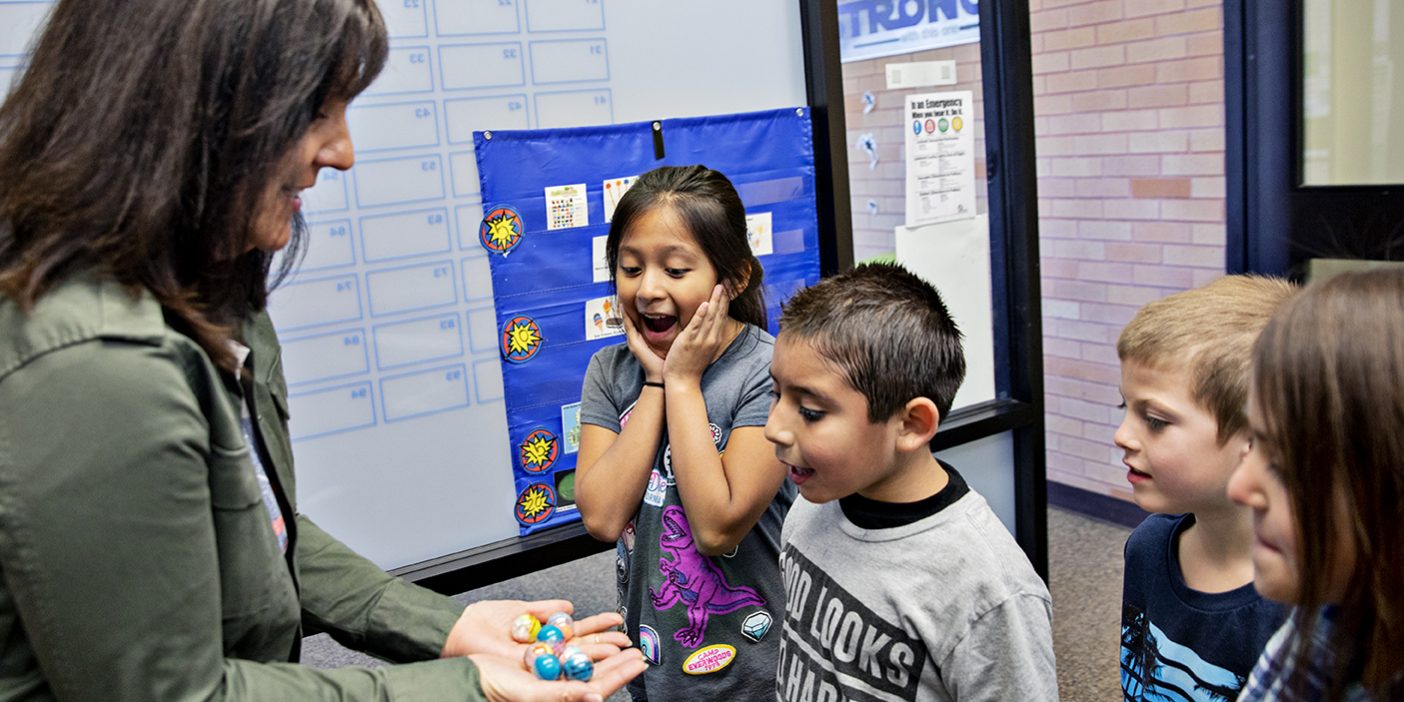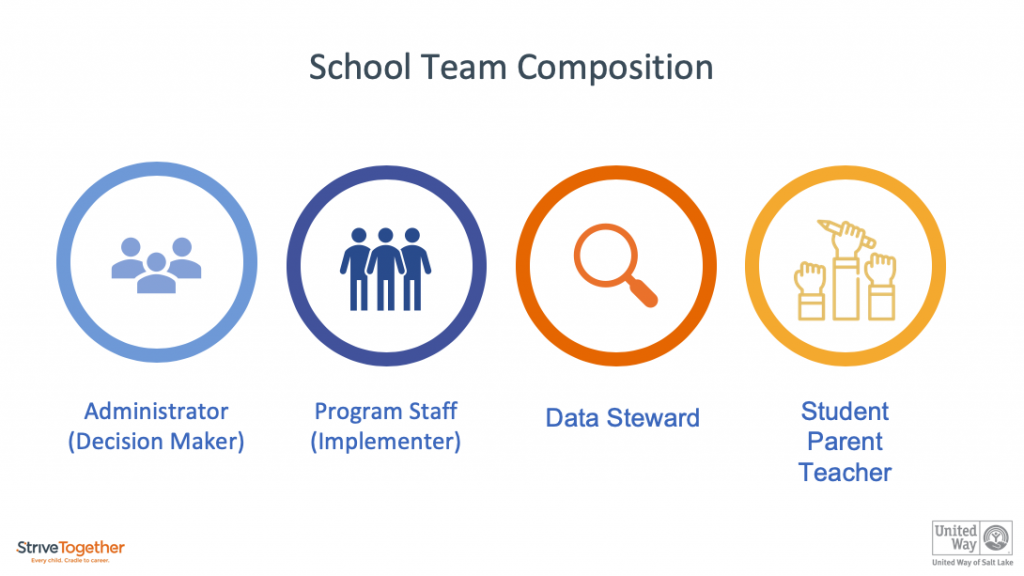In Salt Lake City, Utah, school staff and community partners are using improvement science to get better outcomes for kids and families. This week, I’m joining Tyler Asman from United Way of Salt Lake to share the story of this work at the Carnegie Foundation Summit on Improvement in Education.
The story started two years ago when too many students were missing too many days of class, and United Way of Salt Lake asked StriveTogether to convene an impact and improvement network to tackle the issue. Using collaborative improvement — StriveTogether’s unique approach to continuous improvement — the network’s efforts led to some remarkable results, including a 14% drop in absence rates for chronically absent first-graders at one elementary school.
From this experience, Tyler and I have several lessons about working toward improvement across a community. Here are our top six insights:
 Make sure the right people are on board. The composition of your team and network will determine if you can reach your target students and scale successful strategies. Take time to think deeply about who needs to be engaged and what they will contribute. And, to truly understand the community’s challenges and possible solutions, include students and parents of the population you are trying to support.
Make sure the right people are on board. The composition of your team and network will determine if you can reach your target students and scale successful strategies. Take time to think deeply about who needs to be engaged and what they will contribute. And, to truly understand the community’s challenges and possible solutions, include students and parents of the population you are trying to support.- Walk the talk. Leading improvement work means that you must model effective improvement strategies in your own work. The quicker you and your organization start using continuous improvement tools and methods, the quicker others around you will take on the same approach.
- Get support for the work at all levels. Collaborative improvement requires people to shift their priorities. Be willing to try new processes and ways of working. Organization leaders also must use their authority to ensure staff members have time and space to do this work. Others will join your efforts as they see success.
- Be patient — change is hard. Improvement work often requires people to change how they act every day. Give team members time to adjust and find ways to support them as they take on new habits. Building a culture of continuous improvement doesn’t happen overnight. Celebrating early wins and providing coaching can be the keys to success.
 Kids are more than just numbers. Using quantitative data is essential throughout the continuous improvement process, but it does not tell you the full story. Integrating qualitative data allows you to uncover the why behind the numbers, providing a stronger understanding of community challenges and a clearer direction for the work.
Kids are more than just numbers. Using quantitative data is essential throughout the continuous improvement process, but it does not tell you the full story. Integrating qualitative data allows you to uncover the why behind the numbers, providing a stronger understanding of community challenges and a clearer direction for the work.- To solve systemic challenges, go beyond technical tools and solutions. Continuous improvement work involves a lot of tools and templates, but obstacles can’t be overcome by just filling out a worksheet. In reality, before you begin to create solutions, you must dig below the surface to understand root causes of problems — often a result of the systemic inequities that must be addressed. The Salt Lake City team uses collaborative improvement to share strategies, track data and build connections so that every kid in Salt Lake City has every chance to succeed.
In addition to improving attendance, United Way of Salt Lake City used StriveTogether’s collaborative improvement strategies across the community, including improving access to a local food pantry and increasing mental health screenings at a free clinic. The organizations’ partnership was one of six examples chosen as a 2018 Carnegie Foundation Spotlight on Quality in Continuous Improvement. Learn more about this recognition.


 Make sure the right people are on board. The composition of your team and network will determine if you can reach your target students and scale successful strategies. Take time to think deeply about who needs to be engaged and what they will contribute. And, to truly understand the community’s challenges and possible solutions, include students and parents of the population you are trying to support.
Make sure the right people are on board. The composition of your team and network will determine if you can reach your target students and scale successful strategies. Take time to think deeply about who needs to be engaged and what they will contribute. And, to truly understand the community’s challenges and possible solutions, include students and parents of the population you are trying to support. Kids are more than just numbers. Using quantitative data is essential throughout the continuous improvement process, but it does not tell you the full story. Integrating qualitative data allows you to uncover the why behind the numbers, providing a stronger understanding of community challenges and a clearer direction for the work.
Kids are more than just numbers. Using quantitative data is essential throughout the continuous improvement process, but it does not tell you the full story. Integrating qualitative data allows you to uncover the why behind the numbers, providing a stronger understanding of community challenges and a clearer direction for the work.



